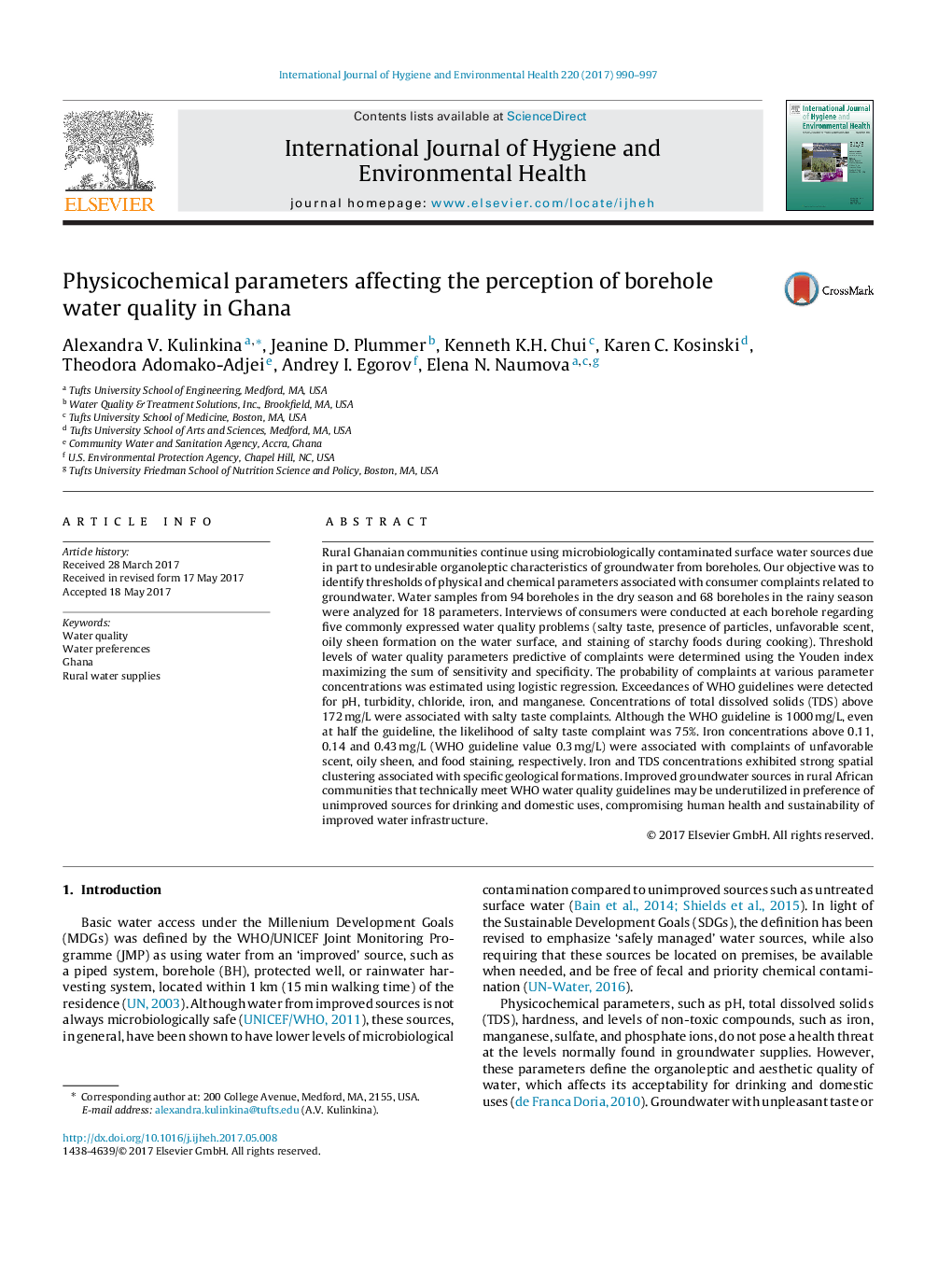| کد مقاله | کد نشریه | سال انتشار | مقاله انگلیسی | نسخه تمام متن |
|---|---|---|---|---|
| 5560475 | 1561871 | 2017 | 8 صفحه PDF | دانلود رایگان |
Rural Ghanaian communities continue using microbiologically contaminated surface water sources due in part to undesirable organoleptic characteristics of groundwater from boreholes. Our objective was to identify thresholds of physical and chemical parameters associated with consumer complaints related to groundwater. Water samples from 94 boreholes in the dry season and 68 boreholes in the rainy season were analyzed for 18 parameters. Interviews of consumers were conducted at each borehole regarding five commonly expressed water quality problems (salty taste, presence of particles, unfavorable scent, oily sheen formation on the water surface, and staining of starchy foods during cooking). Threshold levels of water quality parameters predictive of complaints were determined using the Youden index maximizing the sum of sensitivity and specificity. The probability of complaints at various parameter concentrations was estimated using logistic regression. Exceedances of WHO guidelines were detected for pH, turbidity, chloride, iron, and manganese. Concentrations of total dissolved solids (TDS) above 172Â mg/L were associated with salty taste complaints. Although the WHO guideline is 1000Â mg/L, even at half the guideline, the likelihood of salty taste complaint was 75%. Iron concentrations above 0.11, 0.14 and 0.43Â mg/L (WHO guideline value 0.3Â mg/L) were associated with complaints of unfavorable scent, oily sheen, and food staining, respectively. Iron and TDS concentrations exhibited strong spatial clustering associated with specific geological formations. Improved groundwater sources in rural African communities that technically meet WHO water quality guidelines may be underutilized in preference of unimproved sources for drinking and domestic uses, compromising human health and sustainability of improved water infrastructure.
Journal: International Journal of Hygiene and Environmental Health - Volume 220, Issue 6, August 2017, Pages 990-997
